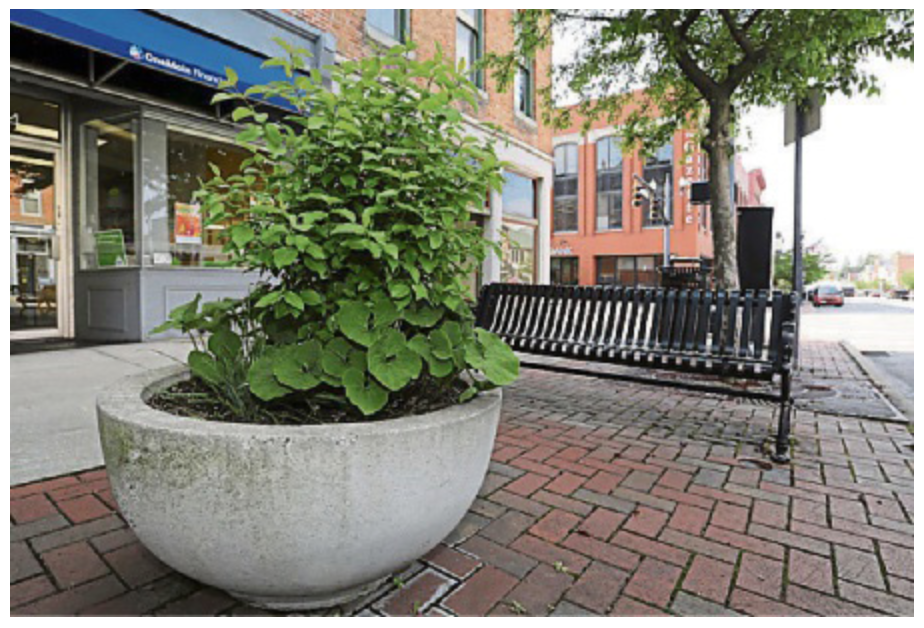From The Columbus Dispatch • Sunday May 31, 2015 5:14 AM
By Dean Narciso
DELAWARE, Ohio — The vincas and petunias spill from baskets in many suburban downtowns. It’s a beautiful floral explosion, but one that is expensive and unnatural in central Ohio, where those plants aren’t native.
Stroll through Delaware, and you’ll find something different. Replacing the exotic and colorful splash of color are about 20 concrete planters filled with muted, earthy-looking, shrublike plants, each one an Ohio native.
Liz Neroni came up with the idea while living in downtown Delaware, which went with petunias year after year.
Neroni is a naturalist at Preservation Parks, Delaware County’s park system. She envisioned the planters as tools for teaching, “to have people realize natural plants are super important. They’re supposed to be here. They’re a huge part of the ecosystem.”
Ohio’s birds, insects, bees and other pollinators evolved with native plants “like they have a relationship together,” she said. “They’re beautiful and beneficial to the wildlife that live here.”
Among the small shrubs are bayberry, blackhaw viburnum and smooth hydrangea. Each has medicinal uses.
And many of the plants are perennials, such as swamp milkweed, wild ginger and strawberry.
The natives, which have adapted to Ohio weather, require less water and little if any fertilizer or pesticides, said Rich Niccum, education-services manager for Preservation Parks. “Overall, (cities) don’t need as much time to maintain them. It’s a money-saving opportunity as well.”
Plus, they are a natural draw for birds and insects — helpful pollinators at a time when bee populations are in decline.
Downtown passersby seem to take little notice of the change. And city leaders hope that silence indicates acceptance.
“I expected to hear complaints about the lack of color because everyone is so used to us putting in petunias and sweet-potato vine, but no one has mentioned the change in a negative way,” said Frances Jo Hamilton, executive director of Main Street Delaware, which oversaw the project.
The plants, from local growers, cost about $1,200, Niccum said.
“People have this mindset of native plants being weeds, that they’re kind of unattractive and plain,” said Neroni. “They don’t think of natives when they’re designing planters or decorating their yards. But we’re trying to show people that they’re wonderful.”
dnarciso@dispatch.com

